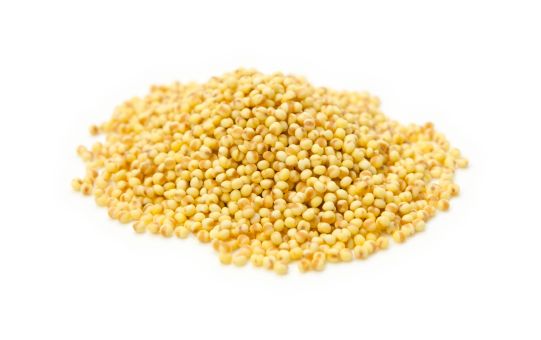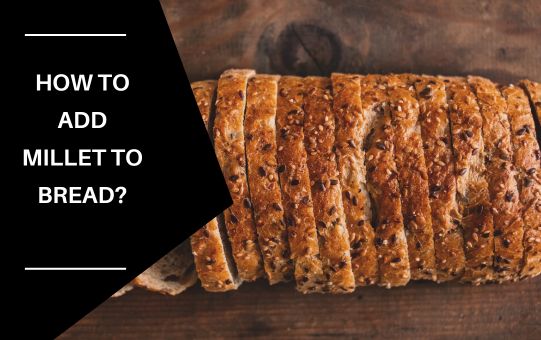Want to elevate your bread-making game? Learn how to add millet to bread for a delicious, nutritious crunch. Follow our step-by-step guide now.
Bread has always been a staple in our diets. It’s versatile, comforting, and easy to make. But have you ever thought of adding millet to your bread recipe? Millet is a nutritious grain that is often overlooked, but it’s packed with health benefits. Adding millet to bread not only adds a pleasant crunch but also boosts its nutritional value.
In this article, we will guide you through the steps on how to add millet to bread and provide you with tips on how to make the perfect loaf.
Contents
Why Add Millet to Bread?
Before we dive into the steps on how to add millet to bread, let’s discuss why you should consider doing it. Millet is a gluten-free grain that is high in protein, fiber, and essential nutrients such as magnesium, phosphorus, and zinc.
It’s also low in fat and easy to digest, making it an ideal ingredient for people with dietary restrictions or digestive issues. Here are some benefits of adding millet to your bread recipe:
- Adds a pleasant crunch and texture to your bread
- Increases the nutritional value of your bread
- Provides essential nutrients and minerals
- Gluten-free option for people with celiac disease or gluten intolerance
How to Add Millet to Bread: Step-by-Step Guide
Now that you know why you should add millet to your bread recipe, let’s get into the nitty-gritty of how to do it. Follow these simple steps to add millet to your bread dough:
Step 1: Choose the Right Type of Millet
There are various types of millet available in the market, but not all of them are suitable for bread-making. The most commonly used millet for bread-making is pearl millet, also known as bajra. It has a mild, nutty flavor and adds a pleasant crunch to bread. You can find pearl millet at your local health food store or online.
Step 2: Measure the Millet
Once you have chosen the right type of millet, it’s time to measure it. For every cup of flour, you can add 1/4 to 1/2 cup of millet, depending on how crunchy you want your bread to be. You can also adjust the amount of millet based on your preference.

Step 3: Soak the Millet
Soaking the millet before adding it to the bread dough helps to soften it and make it easier to digest. You can soak the millet in water for at least 30 minutes or overnight, depending on your preference.
Step 4: Add the Millet to the Dough
After soaking the millet, drain the water and add the millet to the bread dough during the kneading process. Make sure to distribute the millet evenly throughout the dough.
Step 5: Bake the Bread
Once you have added the millet to the dough, it’s time to bake the bread. Follow your bread recipe instructions and bake the bread as you normally would. The millet will add a pleasant crunch to your bread and enhance its nutritional value.
See Also>>> what is difference in nutrition millet vs brown rice?
Benefits of Adding Millet to Bread
Millet is an ancient grain that has been consumed for thousands of years. It is a rich source of nutrients such as magnesium, phosphorus, and fiber.
Adding millet to your bread can increase its nutritional value, making it a healthier option. Additionally, millet can add a crunchy texture to your bread, which can be a delightful surprise in each bite.

Tips for Adding Millet to Bread
Here are some additional tips to keep in mind when adding millet to your bread:
- Use a bread flour that has a high protein content to ensure that your bread has a good structure.
- Mix the millet into the dough gently to avoid overworking it.
- Consider adding other grains, such as quinoa or amaranth, to your bread for added texture and flavor.
- Experiment with different bread recipes to find the perfect combination of ingredients for your tastes.
SEE ALSO> which is better ragi vs millet for weight loss?
Conclusion
Adding millet to your bread can be a simple way to add nutrition and texture to your baking. By following these tips and methods, you can successfully add millet to your bread dough and create a unique and delicious loaf.
Experiment with different recipes and techniques to find the perfect balance of flavors and textures. Happy baking!
FAQs
Can I use other grains instead of millet in my bread recipe?
Yes, you can use other grains such as quinoa, chia seeds, or sesame seeds to add a crunchy texture to your bread.
Is millet gluten-free?
Yes, millet is gluten-free, making it an excellent alternative for people with celiac disease or gluten intolerance.
How do I know if my millet bread is fully baked?
You can check if your bread is fully baked by tapping the bottom of the loaf. If it sounds hollow, it means the bread is fully baked.

